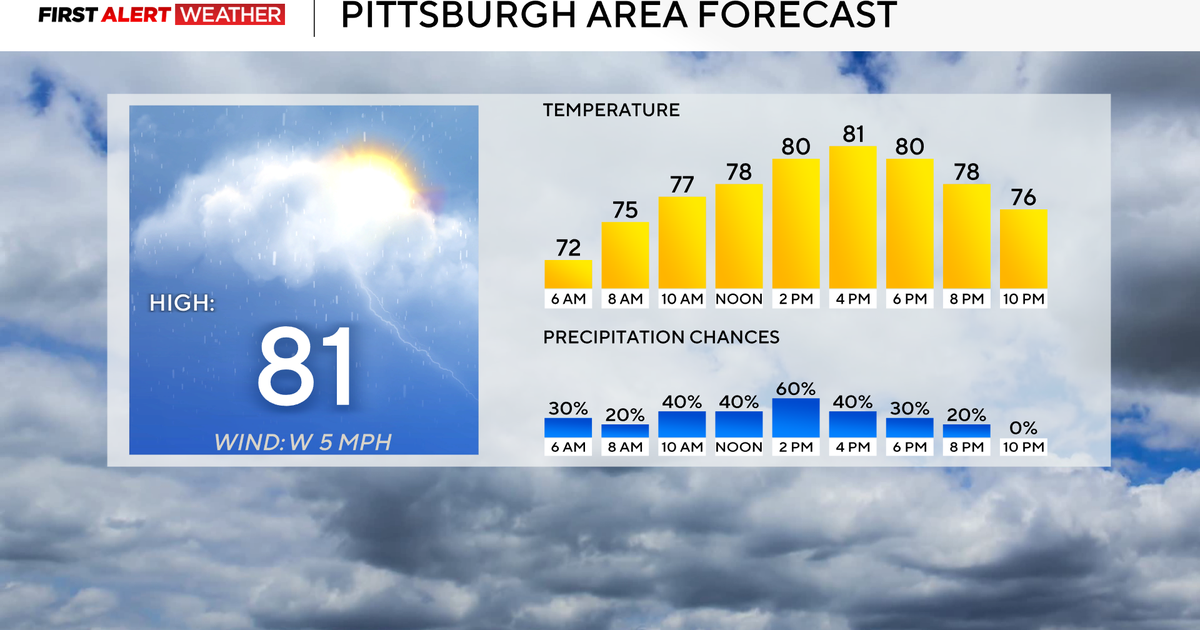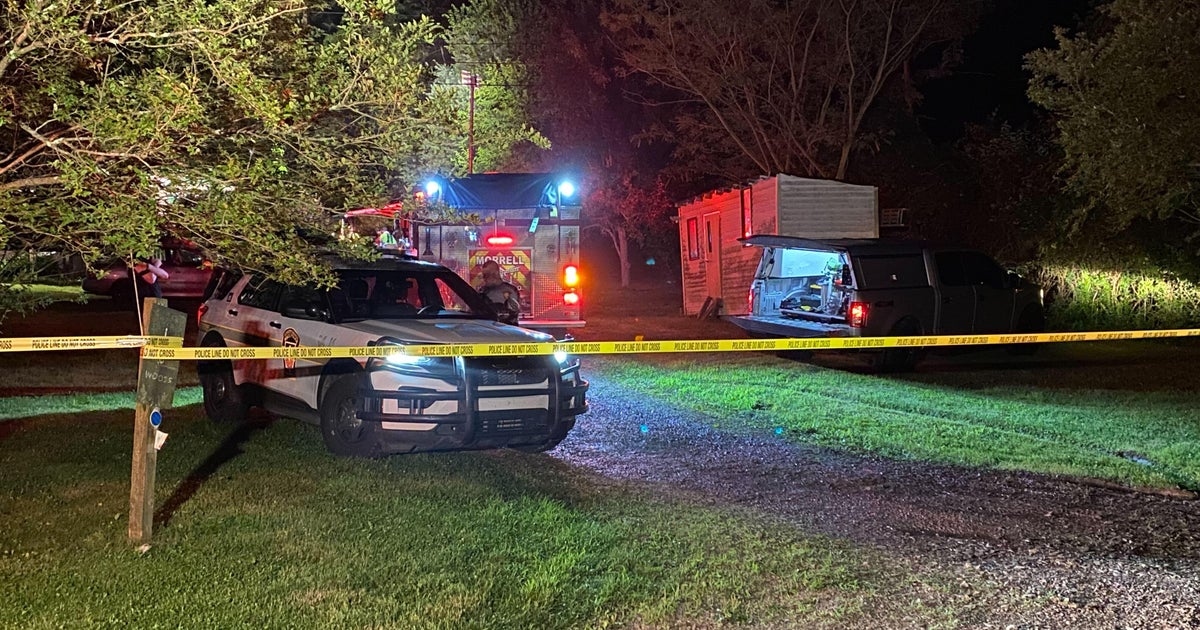Despite Pandemic, Pittsburgh Hospitals Able To Meet Demand As The Nation Tries To Recover From Blood Donation Crisis
By: KDKA-TV's Amanda Andrews
In 2019, Vitalant recognized it had a problem in Pittsburgh.
The non-profit specializing in blood collection and distribution across the nation had, over the years, set up extensive operations throughout Southwestern Pennsylvania. With a combination of blood drives and 10 fixed-location blood donation centers, it quickly established itself as the main supplier of blood in the region to major healthcare systems such as UPMC, Allegheny Health Network and St. Clair Health.
Jennifer Davis has served as the Senior Director for Donor Recruitment at Vitalant for 20 years and has observed how the local blood supply has rapidly dwindled. From 2007 to 2017, the organization reported a staggering 50% drop in donations from donors in the Pittsburgh area. Vitalant began importing more blood from areas outside of the Pittsburgh region — as much as 50% of the supply provided to local hospitals.
"While that may not seem like a bad thing if someone has more blood than what's being used in their area, why would we not want to do that? It becomes concerning when the other places don't have blood to share," Davis said. "That's when it's concerning. Plus, the blood helps the patient when it's in the hospital, and it's already been tested and processed. It's not as helpful if it's still being transported here."
Vitalant held a press conference in 2019, seeking to spread the word among the local news media and the community about the situation and to urge people to donate. This tactic proved to be effective, and Vitalant experienced a 6% increase in blood donations to end that year.
Even if it was not a full reversal of the previous decline, according to Davis, Vitalant expected to be able to build on that momentum and find more donors willing to roll up their sleeves in 2020.
All of that progress was eroded away when the coronavirus pandemic hit hospitals and society with full force.
Repeatedly, over the last two years, Vitalant has raised the alarm to the public over a critical blood shortage crisis caused by the coronavirus pandemic — first in May of 2020, next almost a year later in June of 2021, again in October of 2021 and two times alone in January of 2022. By January 10, 2022, Vitalant reported it had seen "historic, two-year low blood supply," adding that O type blood was at less than the recommended four days worth of supply across the country. Vitalant pointed to various contributing factors for the critical losses, mentioning that shelter-in-place orders, COVID-19 surges and issues with blood drive appointments all played a part.
Vitalant, both locally and nationally, has not been alone in experiencing these issues. Rather, it has been reflective of a worrying trend, which has been much worse in other areas of the United States. The Red Cross runs a considerable blood operation, reportedly providing about 40% of the nation's blood supply to hospitals. Just as Vitalant reported a 2-year low, the Red Cross announced on January 11 that it was seeing a record 10-year low in its blood supply, prompting it to declare its first-ever national blood crisis.
In recent months in some cities and states, this has temporarily led to delayed elective surgeries and patient care, including in Virginia in July of 2021 and in Los Angeles County in January of 2022.
So far, Pittsburgh hospitals have avoided this critical aftereffect of the shortage, but blood collections are still low, according to Davis.
"Just from blood drives alone I mean, we're roughly collecting at maybe 70% of what we were doing pre-pandemic, so we're down about 30% on just our mobile donations. Our donor centers are about flat. They've seemed to hold their own, and that's our brick-and-mortar locations. We have 10 of them in the Pittsburgh area," Davis said. "…we're down 25% to 30% on our mobiles if I look at it from an annual [report]. I'm sure there are ebbs and flows month to month, there could be some months that are closer to normal where others are not, but it's 25% to 30%."
Healthcare systems across the country have seen fluctuating patterns in blood supply and in extreme times has had only a day and a half to two days worth of blood supply for hospitals in certain regions. Pittsburgh's hospitals, however, has been more fortunate for a number of reasons.
"UPMC has the blood supplies needed to care for our patients," Wendy Zellner, Vice President of UPMC Public Relations said in a statement. "We have a long-running patient blood management program across the health system, including computerized physician order entry systems to guide evidence-based transfusions; promoting alternative blood transfusion methods and providing blood management education and auditing for clinicians. UPMC encourages community members to donate life-saving blood through their local blood drives."
Dr. Allan Philp, the assistant chief medical officer at Allegheny General Hospital, said that the hospital did have to deal with a less than ideal supply of platelets, which are an important part of the blood that allows for clotting after illness or surgery. This happened during the omicron variant spike, which was "purely the result of lower donations when we were in that kind of second surge of the omicron variant."
However, hospitals with Allegheny Health Network overall have only been mildly impacted by shortages during the pandemic, if at all. Philp said that one of the reasons for this has been updated medical research that has indicated that less blood and fewer blood components, such as hemoglobin, are needed for transfusions, which has led to less waste.
"We've been very proactive I think over the last few years with patient blood management," Philp said. "We have a really good medical director … and a good team there that has really been helpful in optimizing our electronic medical records so that there's an order set to manage anemia and their guidelines. For example, if you're trying to transfuse somebody above a level that's considered the most current guidelines, it pops up with a little warning to make sure it's really appropriate."
Much of this type of more recent blood auditing was also echoed by Dr. Raymond Alan Woshner, an Associate Pathologist and the Blood Bank Medical Director at St. Clair Health. For instance, on a national level, doctors and nurses traditionally gave anemic patients showing symptoms two units of packed red blood cells and have been slow to give up this practice despite new research. At St. Clair Health, they have been proactive in adapting to changing medical guidance, according to Woshner.
"But as time went on and the literature was piling up and started to show that a lot of these patients only needed one unit of packed red blood cells, so why are we giving the second unit? We're not only using a valuable resource to do this, but we're also exposing this patient to a second unit of blood that they don't need, and there are potential harms that come with that," Woshner said. "A lot of people view a blood transfusion as a harmless event and in many, many times it is, but we really look at this as this is a liquid transplant — you're putting tissue from another patient into a patient."
He noted that there have been delays in receiving orders of platelets but that was in part due to the fact that platelets have a "short shelf life" once donated. At no point has St. Clair Health seen any cancellations of any surgeries because of blood shortages during the pandemic.
"We have a much smaller inventory of blood products that we keep here on a regular basis, so we've seen less impact in that regard as far as our ability to keep our inventory at a target level," Woshner said. "We have had intermittent problems reaching our inventory goals, but we've still been able to meet the needs of our patients. So we've run low on products from time to time, which is not unusual, but not to the point that it's been a critical shortage for us. And we've always been able to at least get part of our orders in from Vitalant to maintain the inventory that we need."
Vitalant representatives said part of the reason local hospitals have not felt the impact as much is that they have worked to ensure this area's facilities retain their needed blood supply. They added that this is important as Pittsburgh is a major center for medical facilities and medical innovation.
To meet the need, Vitalant coordinates with schools, places of worship and workplaces to coordinate blood drives throughout the area. While the pandemic severely reduced the ability for Vitalant to be able to come to donors, drives have started resuming more regularity as the omicron spike has waned.
Although, even with places being willing to hold drives and people becoming more willing to donate with lower COVID-19 community spread, blood donation drives are facing another challenge: staffing. Phlebotomists are in short supply, according to the Pennsylvania Department of Health. On February 3, the department issued a press release, addressing the workforce issue.
"A significant factor contributing to blood shortages is a decrease in the amount of people entering the field of phlebotomy," Patrick Bradley, President and CEO of Central Pennsylvania Blood Bank said in the release. "There is a high demand for these positions as it requires a unique skillset."
Even with shifting variables impacting blood donation, the need for blood in Pittsburgh is constant, according to doctors, blood donation drive organizers and donors themselves. The most highly sought for is O positive and O negative blood and specialized products, such as AB Plasma and platelets, which are very helpful for emergency and cancer patients. Health officials encourage people to overcome traditional phobias and misconceptions and give donating a chance.



